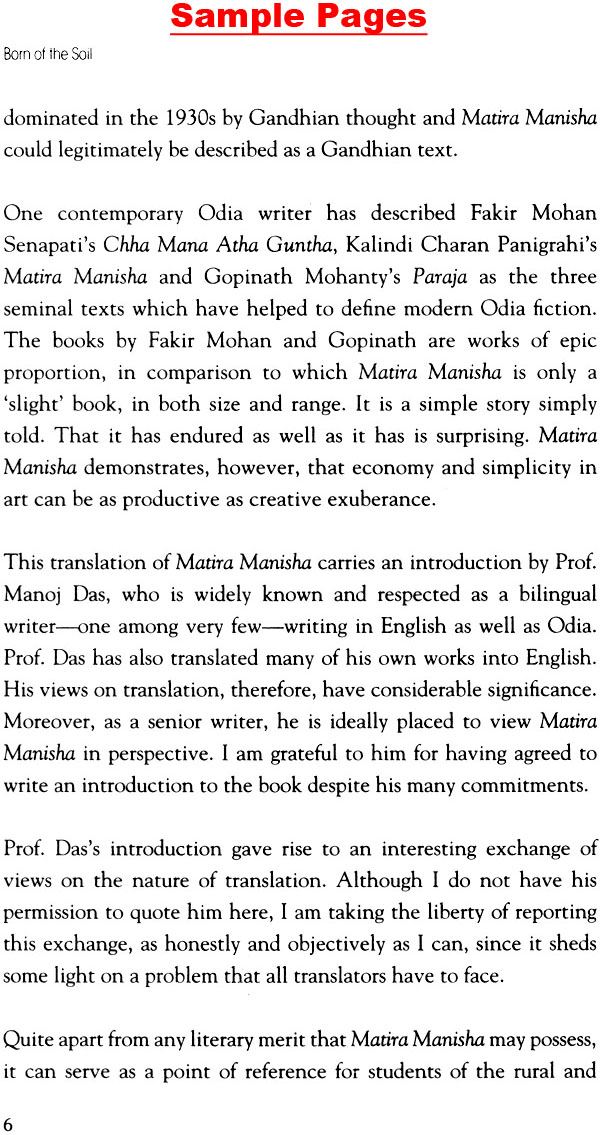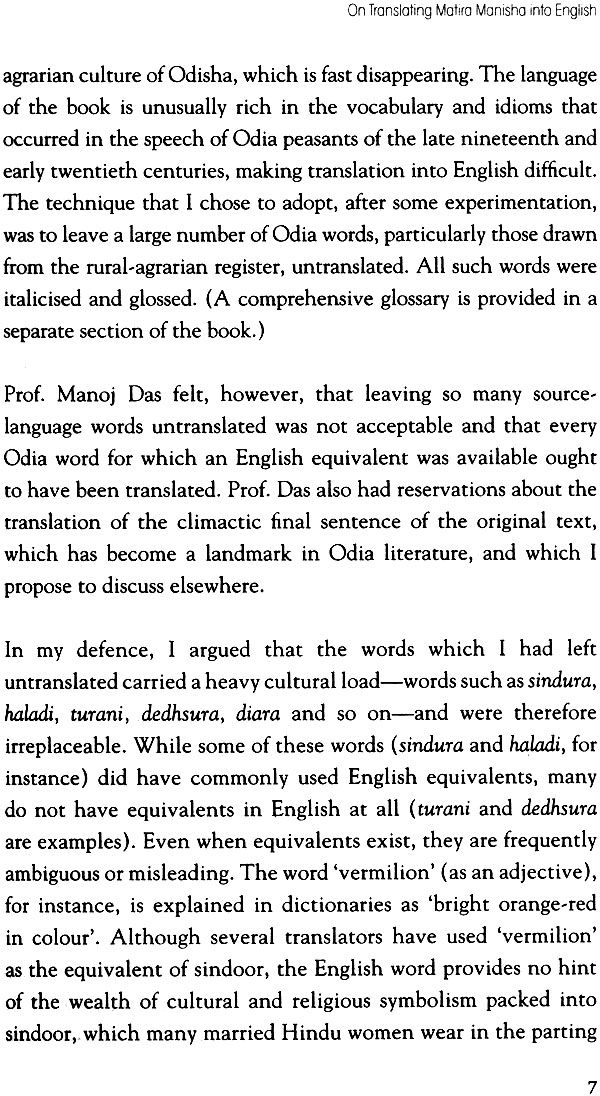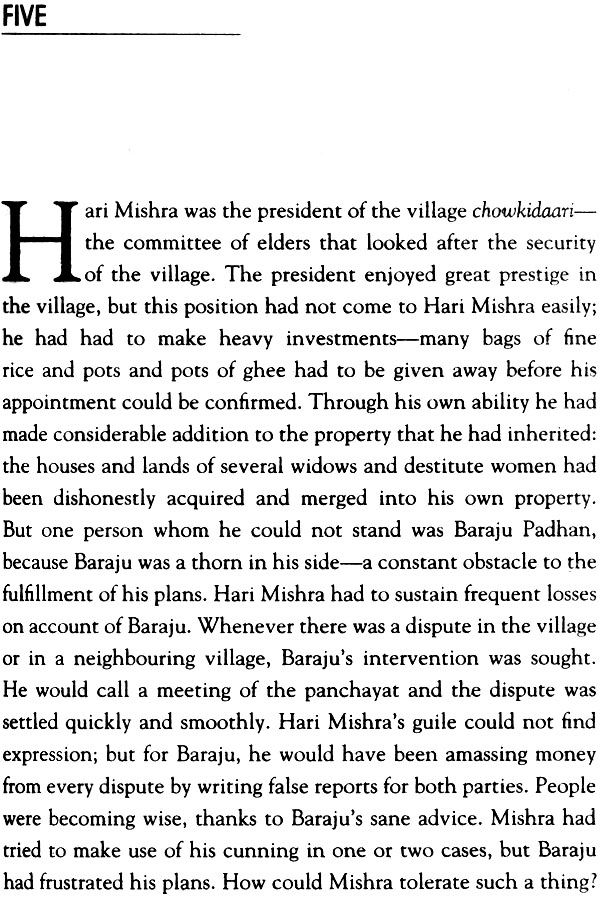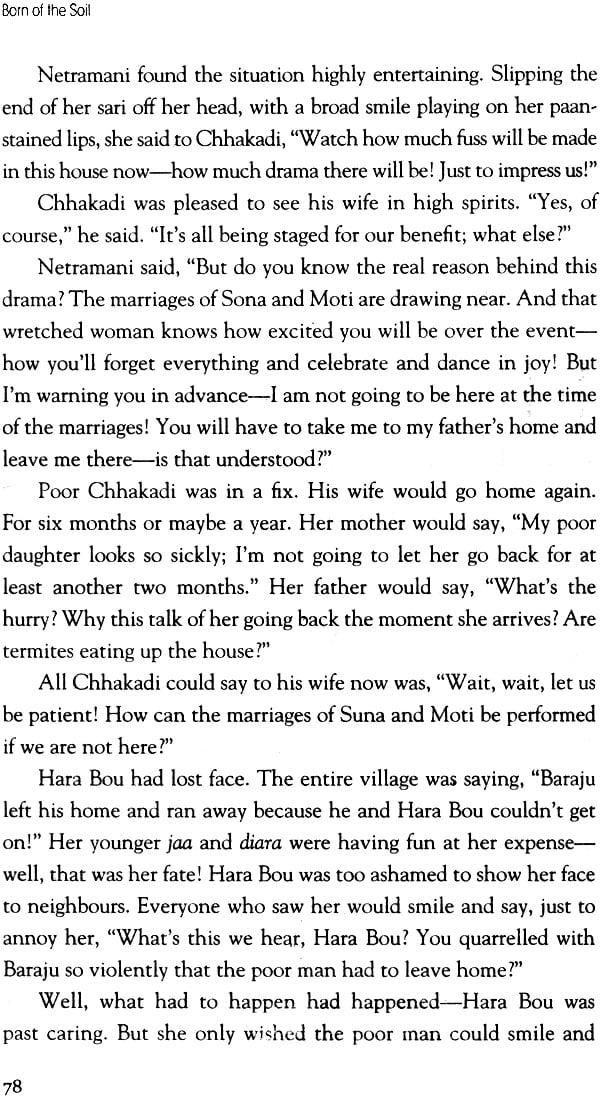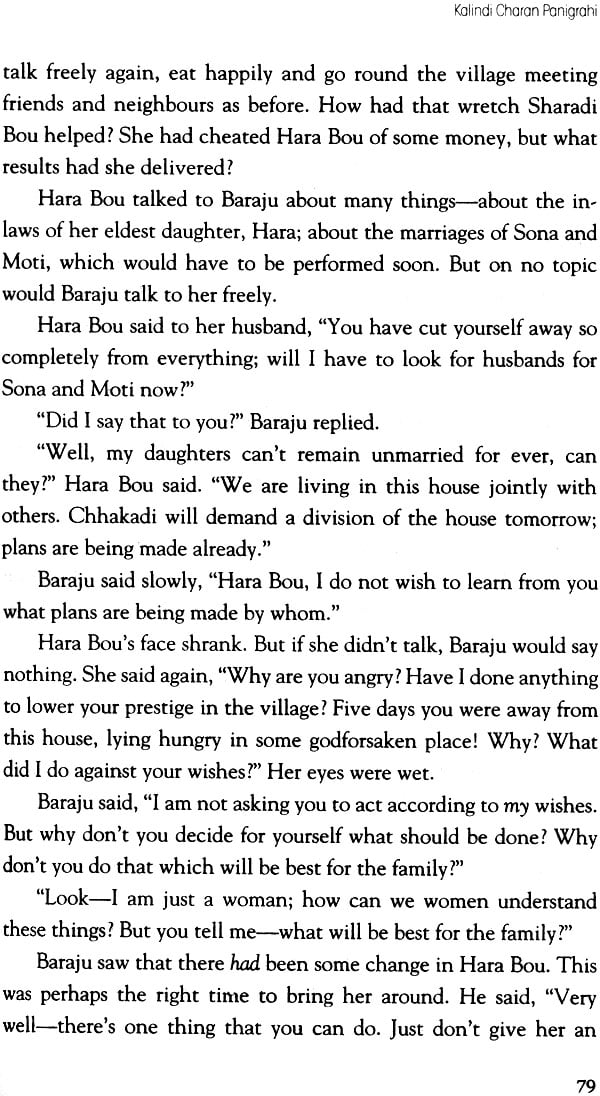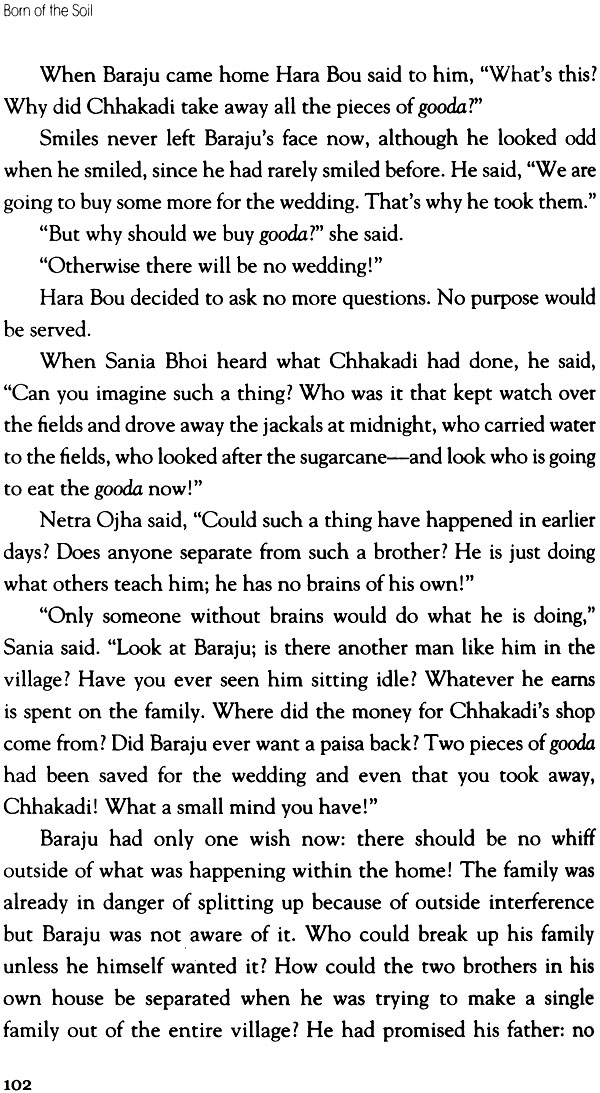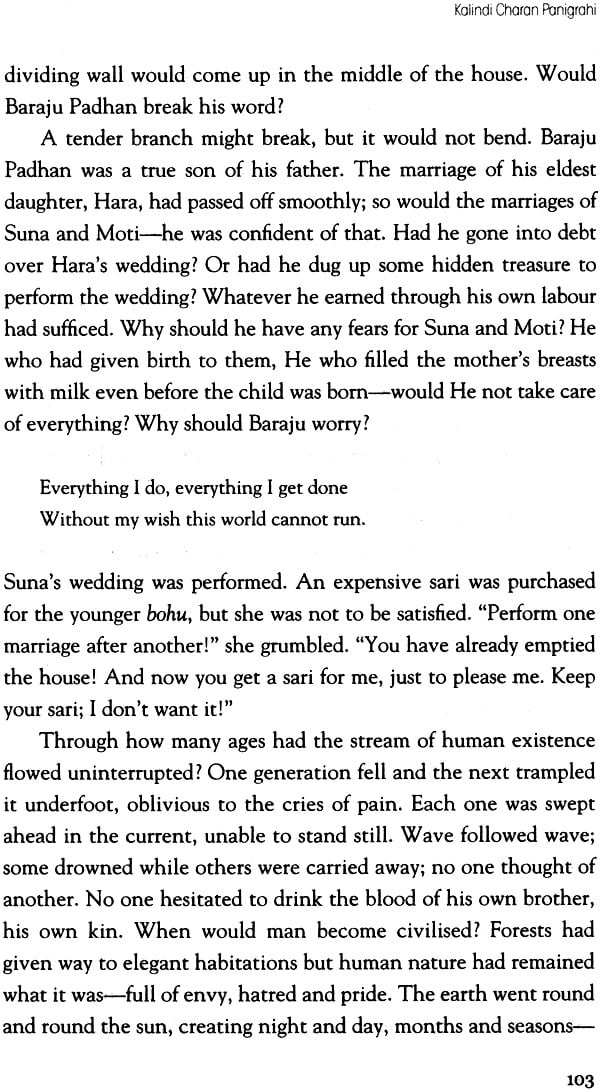
Born of The Soil
Book Specification
| Item Code: | NAJ805 |
| Author: | Kalindi Charan Panigrahi and Bikram Das |
| Publisher: | Niyogi Books |
| Language: | English |
| Edition: | 2017 |
| ISBN: | 9789385285585 |
| Pages: | 136 |
| Cover: | Hardcover |
| Other Details | 8.5 inch X 5.5 inch |
| Weight | 290 gm |
Book Description
Matira Manisha (‘The Man of the Soil’) is one of those uncommon artistic creations which prove that good art does not have to be convoluted or obscure. The novel’s enduring appeal lies in its very starkness. It is the story of an Odia peasant family whose simple joys and sorrows are bound up with the soil. Baraju Padhan, who becomes the head of the family after the death of his father, Shaama Padhan, inherits his humanism and is committed to the traditions and ideals of joint family existence, but his younger brother, Chhakadi, instigated by his wife Netramani, is determined to split up the home.
The book is remarkable not only for its depiction of enduring human values but also for its realistic portrayal of the culture of rural Odisha. The language of the novel is a bold attempt at capturing the idiom of the people whose life it presents. Matira Manisha lies close to the hearts of Odia society, and has been made into an award-winning Odia film by Mrinal Sen.
KALINDI CHARAN PANIGRAHI (1901-1991) belongs to the post-Fakirmohan, post Gopabandhu generation, appearing at a time when Odia writers were no longer crusading for a racial, linguistic or cultural identity and could explore new areas of experience with greater self-assurance. While still in his twenties, Kalindi Charan, along with Annada Shankar Ray and a few other budding poets, proclaimed the birth of a new literary movement, named ‘Sabuj Sahitya’ (Green Literature). The ‘greenery’ that inspired their writing was a declaration of soft, youthful idealism and romanticism rather than the radicalism of contemporary writing. The Sabuj group drew inspiration from Tagore, Marx and Gandhi. Like Tagore, Kalindi Charan tried his hand at multiple genres besides poetry-novel, short story, drama, biography and essay. His fame, however, rests chiefly on the slender novel Motira Manisha, written in 1934. He is also remembered as the father of Nandini Satapathy, who was Odisha’s Chief Minister.
DR BIKRAM K. DAS is an esteemed translator, and was a professor at the Central Institute of English and Foreign Languages, Hyderabad, and at the National University of Singapore. He has translated many Odia books into English, including Gopinath Mohanty’s Paroja and The Survivor and J.P. Das’s The Pukka Sahib. His translation of Paraja won him the first Sahitya Akademi Translation Prize in 1989.
It is significant that social realism formed a solid basis for Odia fiction from the very first phase of its development. The trend was set by Fakir Mohan Senapati (1843-1918), recognised as the father of the genre, through twenty of his short stories and three out of his four novels. Several novels followed the doyen’s classics, but between him and works of the great novelist Gopinath Mohanty, Matira Manisha (1934) by Kalindi Charan Panigrahi (1901-1991) stands as a milestone and shines brilliantly as a work that gave a boost and currency to the idea of exploring aspects of realism as themes for creative fiction. Through his protagonist in Matira Manisha, Baraju, Kalindi Charan dared to show that, far from being an antonym of realism, idealism could serve as its elan vital in a most credible way.
There are several dimensions to the importance of Matira Manisha. To refer to only two of them, the prominently simple outline of its story proved that a novel need not be built on a complex plot in order to retain the reader’s interest, if the reader could be made to feel at home with its passage-like a fellow traveller of the characters. The magic by which the author achieves this is his sound perceptivity not only of the noble and the sufferer in his work, but also of the tormentor and the mischief-maker. Furthermore, the language of the novel is in perfect harmony with the air of its rural setting, interspersed with phrases and other idiomatic elements that infuse into the narrative a naturalness that brings the feeling 01 bathing in a smooth and soothing autumn flow of a rivulet passing by one’s nativity.
This proves a formidable challenge for the translator. First and foremost, it demands of him-and it may sound superfluous to state-a proficiency in both languages. But that would not be sufficient to convey to the reader the spirit the novel breathes the author’s faith that true love ingrained in one’s nature could irresistibly work its way into another’s and inspire reciprocation in him, even without protestation by the former. What is required 01 the translator is something more than empathy for the characters be he conscious of it or not, he must have empathy for the author and his milieu.
Dr Bikram Das, who has achieved the distinction of translating into English, among a few other Odia works, as difficult a modern classic as Gopinath Mohanty’s Paraja, is evidently endowed with the aforementioned qualities. He has been commendably successful in preparing Kalindi Charan’s Matira Manisha for its presentation to a wider readership through English. One can understand the difficulty he must have encountered in handling the original’s colloquialisms, but he has tackled the problem remarkably well, without stumbling anywhere along that indispensable charm of the novel-the gracefulness of its narrative process.
